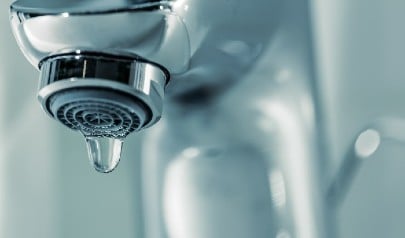Are you currently trying to find selective information concerning Preventing Water Damage in the Bathroom?

The restroom is incredibly prone for damp buildup and also possible water damages as a result of the constant use water in it. This write-up offers simple inspection techniques to help spotting water damage hazards.
The frequent use of water in the bathroom makes it extremely vulnerable for moist buildup and also possible water damages. By evaluating it on a regular basis, you can minimize water relevant damages.
The complying with set of inspections is easy to perform and also need to be done when in every 3 months in order to keep your restroom in good shape and also to stop prospective water damages caused by the bathtub, the shower, pipeline joints and also plumbing, sinks, cupboards, as well as the toilet
Do not neglect executing these assessments as well as be comprehensive while executing them. Remember that these basic evaluations can save you a great deal of cash by offering early signs for water damage
Sinks and Cabinets
Sinks and also cupboards are subjected to moisture and also humidity daily and also are typically neglected. Evaluate on a regular basis under the sink and on the kitchen counter over it. Repair any kind of drip in the trap as it may recommend drain troubles. Browse the sink, slow draining pipelines may show an obstructed drain. Change sink seals if they are broken or loosened.
Tub and Shower
The shower as well as bathtub call for special focus as well as upkeep. Inspect the tiles as well as replace if split. Make sure that there is no missing cement between the floor tiles. Inspect and also replace split caulking at joints where the wall surfaces meet the flooring or the bathtub. Blocked drains and pipelines problems will certainly prevent the tub from drying as well as might suggest significant problems underneath the bathtub. Talk to a professional right away to prevent architectural damages. Take note of stainings or soft locations around the bathtub wall surfaces as they might indicate an inner leak.
Plumbing
Signs for water damage are tough to detect considering that the majority of pipes are set up inside the wall surfaces.
Pay special interest to floor covering and walls dampness and spots as they might show an invisible plumbing issue. Examine moisture levels in adjacent areas as well.
The Toilet
The bathroom is an at risk water junction. Check the water lines as well as look for leakages around the toilet seat, in the hose pipe, and also under the water storage tank. If you identify any signs of wetness on the flooring around the commode, look for leaks in the toilet rim as well as tank seals.
Know that hanging commode dish antiperspirants increases the chances for blockages.
Water Damage Signs In The Bathroom To Avoid Cleanup
Musty smell
This is one of the easiest signs to catch because musty smells are so odorous. The damp, earthy, moldy smell should be a big red flag. The smell will develop when moisture gets trapped in surfaces, and begins to facilitate mold growth. Leaking pipes under cabinets, inside walls, and behind shower fixtures will cause moisture to stay trapped and not dry, which will lead to mold growth and spread. As soon as you notice any musty smells in your bathroom, have it checked for hidden water damage and cleanup signs.
Visible mold
If the smell isn’t there to give it away, sometimes you will actually see mold growth. Finding mold in your bathroom is a serious problem, because mold is very harmful to your health. By the time mold growth is visible, it also means that water damage has already occurred and been present for some time. The only way the mold problem can be resolved is to find the source of the moisture and get it stopped. To safely and adequately remove mold, you need to have professionals handle the remediation. Do not waste any time in getting mold problems addressed, fixed, and sanitized so that you can protect you and your family from the many respiratory symptoms caused by mold exposure.
Damaged floors
Bathroom floors should be able to withstand some exposure to water while still remaining in good condition. However, when excess exposure or water leaks occur, they will begin to damage even the most water-resistant flooring. If you notice any cracking, bubbling, staining, or warping on your bathroom floors, there is probably a water leak somewhere causing the distortion. If you notice areas of the floor have become softer, or even have a spongy feeling, there is probably damage to the subfloor. Subflooring is typically made up of plywood. When plywood is exposed to water or moisture, it will absorb it. Once it has become saturated, the weight of the excess water will cause the wood to swell and soften. Check the floors in your bathroom frequently to catch any of these sings before they lead to damaged subflooring.
Changes on walls
When water leaks behind walls, it will cause changes in the drywall. Peeling plaster, blistering paint, and soggy wallpaper are all good indicators that excess water is building up behind the wall. Water leaking behind drywall will cause it to swell and be soft to the tough. If you start to notice gaps along the trim of your walls, or where tile meets the wall, it could also be a strong indicator that there is a leak behind the wall. Any changes, distortion, or damage on the walls should be evaluated as soon as you notice it to prevent further water damage and cleanup.

As an enthusiastic person who reads about How to Prevent Bathroom Water Damage, I thought sharing that excerpt was essential. Sharing is nice. Helping others is fun. We recognize the value of reading our article about Common Causes of Water Damage in a Bathroom.
Request Appointment
Comments on “Bathroom Water Damage - Ways To Avoid This Happening”